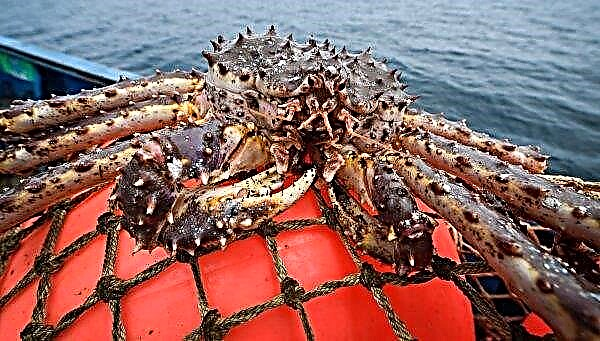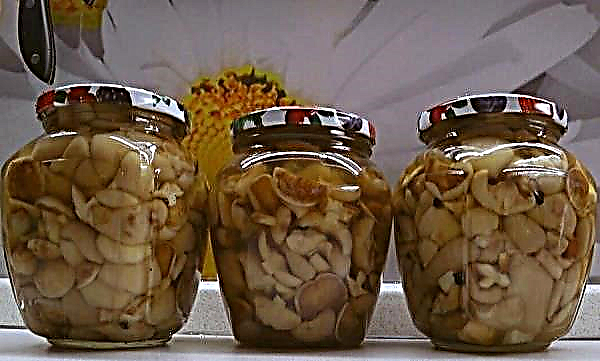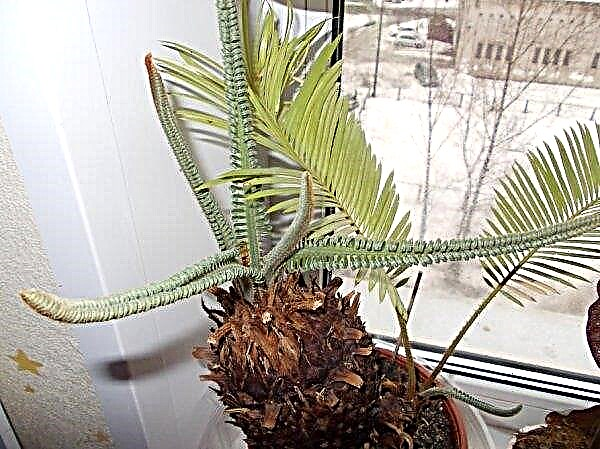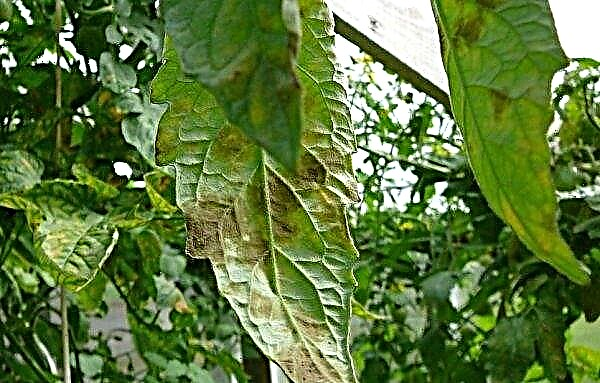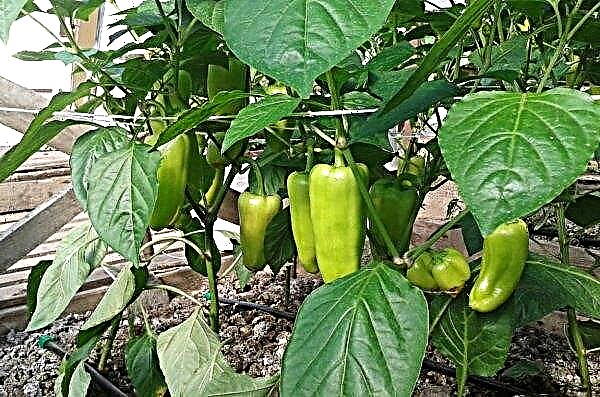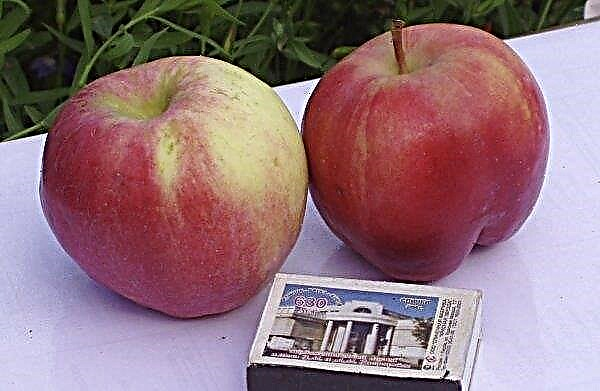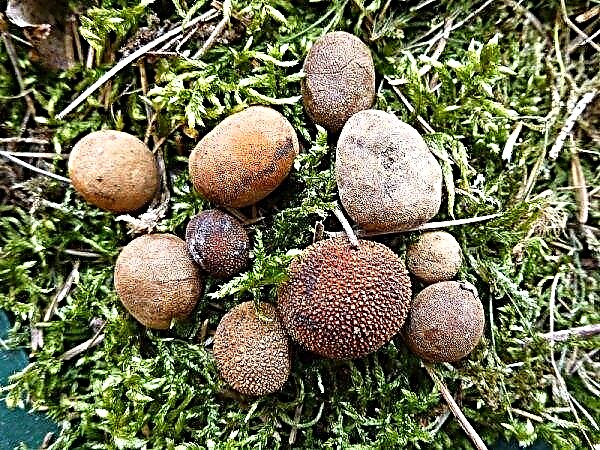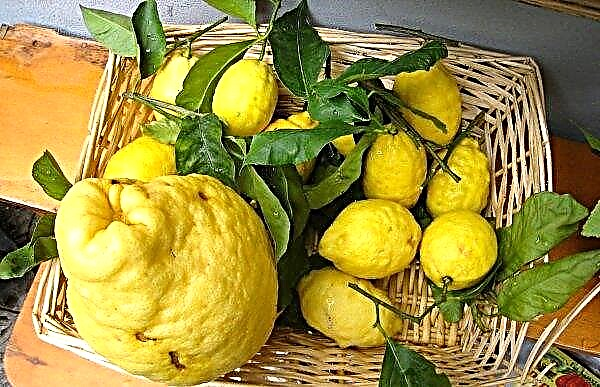One of the most dangerous pests for eggplant in the open ground and in the greenhouse is the spider mite. His presence can be established by certain external signs. How to understand that plants need emergency care, and eliminate the pest, read below.
Pest Description
Spider mite refers to herbivorous arthropods. These mites show pronounced gender differences: males are smaller than females in size and have a more elongated body shape. In larvae, the bodies are divided into segments that become invisible with age. In addition, if the larvae have 3 pairs of legs, then in adults - 4. Thin legs on the tips have clawing devices that cling to plants.
On the surface of the body, covered with a thin cuticle, there are numerous bristles that perform a tactile function. The color range of the spider mite cover can vary from pale white and almost transparent to greenish yellow. The larvae are yellow-green. Adult female individuals in the winter period acquire a bright red or orange color. Through the cuticle, the internal organs on the dorsal side are clearly visible.
On the peritoneum of females is the reproductive apparatus, represented by concavity, covered by a thin folded structure. Females lay a large number of eggs of rounded shape and bright yellow color.
Important! Spider mite eggs are able to maintain their viability for 4-5 years, even in adverse conditions.
The piercing-sucking-type mouth apparatus is adapted for piercing the sheet and suctioning the juice. In the head region there is a spider gland and 2 eyes capable of responding to the short-wave spectrum.
Outwardly, the tick resembles a small spider, with forward extremities, a small head and a large, convex body. However, it is impossible to see it with the naked eye - it has microscopic dimensions. Pest damage is determined by the appearance of plants and the presence of vital products of parasites on the leaves.

Harm and danger of tick
The spider mite multiplies rapidly and is carried downwind, as well as with garden tools not properly treated after infected plants. Larvae and females are able to tolerate even the most severe frosts (up to -30 ° C), wintering in the upper layers of the soil, under fallen leaves and in crevices of tree bark.
The spider mite is capable of causing tremendous damage to any cultural plantings literally in 2 weeks, if measures are not taken in time. In addition to the fact that the pest eats the juice of the plant and deprives it of nutrients, in the process of its life, it braids the web with foliage. A dense layer of a whitish viscous substance slows down the processes of photosynthesis - as a result, plants dry out and die.
If a mite infection occurs at the time of fruiting, the eggplants lose their juiciness and gradually dry out. Also, the tick is a carrier of fungal diseases, such as late blight, anthracnose, etc.Did you know? Eggplant is introduced into the diet of people being treated for nicotine addiction. They contain nicotinic acid, which helps to alleviate the discomfort with a complete rejection of cigarettes.
Signs and causes
The main signs indicating damage by a spider mite:
- change in leaf color to a lighter shade;
- the appearance of brown spots, eventually drying out and transforming into through holes;
- white viscous coating - upon closer examination, it becomes clear that this is a web;
- loss of leaf density;
- lighter patches are also noted on the fruits;
- loss of juiciness of the fruit;
- drying of the root.

The pest progresses in a certain microclimate.
Insects breed rapidly in conditions of low humidity and elevated temperatures:
- air temperature from + 26 ° С;
- humidity 55% and below.
Did you know? Eggplant in its botanical features is the closest relative to the thistle.
What to do and how to deal with a pest
There are several methods to combat this parasite, including:
- agricultural practices - as a prevention of tick reproduction, the occurrence of relapses and an additional means of control;
- biological and chemical preparations - Acaricides designed to kill ticks, or broad-spectrum drugs;
- folk techniques - used at the fruiting stage, when chemicals are prohibited, or with a small number of pests.
Video: eggplant spider mite control measures
Agrotechnical method of struggle
If a spider mite is found on eggplant, the first thing to do is dig the soil next to the main stem to a depth of 5–8 cm, between rows –– 10–15 cm. The next step is to regulate the irrigation regime in order to increase soil moisture. Young seedlings need to be moistened 2 times a week, applying 1 liter under each plant. The water temperature for irrigation should be similar to the ambient temperature. Watering adult plants is reduced to 1 time per week and the frequency is increased to 2-3 times a week at the time of ovary ripening and active fruiting. For an adult plant, the rate of moisture in the soil is 2-3 liters.
If a pest is detected, the next step after increasing the humidity is to rinse the leaves. It is necessary to remove the cobwebs from the leaf tissues in order to accelerate the process of photosynthesis. This should be done with a wet swab in the morning or in the evening, until the complete disappearance of insects.Important! When using high-quality mulch, watering is reduced to 1 time in 7-10 days.
After watering, when moisture is absorbed into the ground, it is necessary to thoroughly dig it up, remove weeds and mulch it with a layer of compost or green grass 8 cm high. As the layer of mulch settles, it must be added so that it is kept at a height of 8 cm all the time. they will retain moisture and generate heat, which will create unfavorable conditions for the development of pests.
This method will be effective in independent use only in the presence of a small number of pests, or in combination with other methods.
Biological method
Preparations of biological origin are intended for disinfecting the soil, eliminating fungal spores and pests, and enhancing plant immunity.
This group includes:- Fitoverm - is a fourth-generation biological product of contact-intestinal action. Effective not only against spider mites, but also against other pests. To prepare a working solution, 1 ml of the drug is dissolved in 1 l of water at room temperature (+ 20 ° C). Then, 9 l of water is added to the solution and sprayed on the leaves and soil 3 times with an interval of 10 days in the presence of a large number of pests.
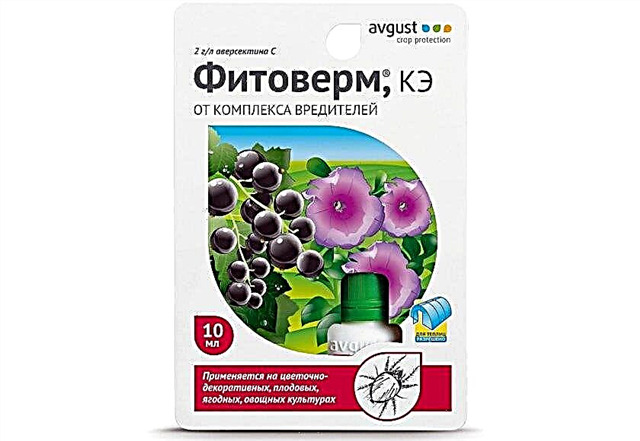
- Fitosporin-M - A microbiological preparation created on the basis of bacteria that are activated by interaction with water. The powder preparation is diluted in water at room temperature 1: 2 and incubated for 1 hour to allow the bacteria to activate. The drug, available in liquid form, does not need to be diluted, it is immediately ready for use. Spraying on leaves and soil is carried out once. The duration of bacteria is 2-3 years.
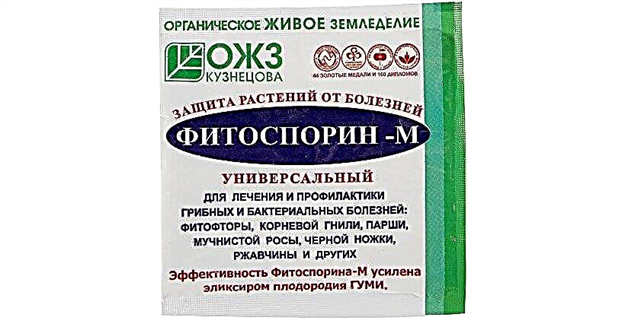
- Wood ash - it can be bought in convenient packaging in specialized flower shops or made independently by burning wood or potato tops. For spraying in 10 l of water, 500 g of ash are diluted and boiled for 20 minutes. Then the solution is filtered and sprayed over the plants from a finely dispersed atomizer. The soil is sprinkled with dry powder at the rate of 100-200 g for each bush.

- Tobacco dust - used in conjunction with wood ash. Elements are mixed in a 1: 1 ratio. For each 1 m² of plantations, 100 g of the mixture in dry form is consumed. The maximum allowable number of treatments is 2 times per season.

- Green soap - An environmentally friendly preparation based on potassium salt, fatty acids and vegetable oils. The working solution is prepared from 400 ml of the drug and 10 liters of water, and then spray it over the plants.

Important! Ready-made working solutions of biological products should be used within 3-4 hours. They are not subject to storage, with the exception of Fitosporin-M, produced in the form of an emulsion.
Chemicals
Chemicals are used in severe cases when the above methods have not given the desired effect. They must be used with extreme caution, observing measures of their own safety, and also take into account that they negatively affect the vital activity of bees and can lead to their death.
This group includes the following tools:
- Tiovit Jet - refers to analogues of colloidal sulfur. It has good solubility in water and high contagiousness (ability to spread). To prepare a working solution in 10 l of water add 50 g of the substance. Spray on the leaves 3-4 times for the entire season with an interval of 20 days.

- Bi-58 - contagious insecticide. To prepare a solution in 10 l of water, add 2 ampoules of the substance. 2 treatments are carried out with an interval of 3-4 weeks.

- Sunmight - prolonged action acaricide remains effective for 1.5–2 months. To 1 liter of water add 1 g of powder and spend a single spraying of plants.

Folk remedies
Folk remedies are effective as prevention and additional treatment of plants in order to restore their functionality. As an independent treatment, they can help only with a small number of insects. The main advantage of such products is complete safety for plants, animals and humans.
The most effective methods:
- Soap solution - processing is carried out every 10 days. For 10 l of water, add 200 g of crushed laundry soap and insist 3 hours. Then place the solution in a container with a spray and carry out the treatment in dry, calm weather.
- Garlic infusion - 3-4 cloves of chopped garlic are added to 1 liter of water and infused for 2 days. After this period, the liquid is diluted with water 1: 1 and sprayed on the leaves and soil.
- Onion infusion - 200 g of husk is poured with boiling water and insisted for 5 days, stirring occasionally. Then the liquid is drained and sprayed over the plants, and the husk is used as mulch.
Important! After each treatment, leaves of any of the preparations or infusions, after 3-5 days, be sure to spray with simple standing water to avoid the appearance of on the leaves sunburn.
Tick Prevention
Prevention is to follow the rules of agricultural technology. The main agricultural technique is deep aeration of the soil (depth 20 cm) with a single application of organic fertilizers and 1% solution of copper sulfate at the time of preparing the land for planting in autumn and spring. Throughout the growing season, it is necessary to maintain optimal soil moisture, taking into account the age of the plants and weather conditions. After moistening the soil, it is necessary to carry out aeration and mulching. In order to prevent the spread of pests 4 times a season, preventive treatments are carried out according to one of the abovementioned folk recipes, or exposure 2 times a season with biological preparations.
In order to prevent the spread of pests 4 times a season, preventive treatments are carried out according to one of the abovementioned folk recipes, or exposure 2 times a season with biological preparations.
So, the spider mite is a dangerous pest of garden crops, which multiplies rapidly in a warm, dry microclimate and is able to quickly destroy the entire crop. To prevent its spread will help the implementation of simple agricultural techniques.










